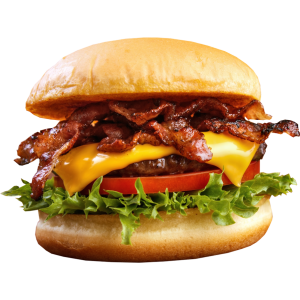The classic pub menu has remained relatively untouched for years and years. Fan-favourites like fish and chips feel as though they will not be removed from pub offerings anytime soon. Generational changes are driving pub and general dining trends, something that is resulting in a change in the average pub-goer.

So how can the pub menu be reinvented to fit this new-age pub-goer? If classic is what a place is going for, however, then how can it be presented in a way that appeals to a changing demographic? Changes to a pub menu could include offering more for health-conscious customers, increasing the amount of free-from meals, and finally, adapting a menu that pairs with drinks. However, there are ways that the same menu can be adapted to attract a variety of diners. This can include the incorporation of technology, food presentation, and developing the offerings through cooking methods and ingredient variations.
Pub classics are classics because they are tried and true. For instance, Arvind Sharma, general manager of The Fox Sporting Bar, said, “We have been doing the same for the last 15 years, and we will carry on with the same idea.” As older generations grew up with lots of the food that is sold in classic pubs—bangers and mash, steak and chips, fish and chips, etc.—people may ask, ‘why fix what isn’t broken?’. However, as the pub-going generation changes, a menu reinvention is something pubs may need to look into. The generations that are beginning to eat out more are increasingly health-conscious, and while there are still those that go to pubs for the pub classics, younger generations are going to expect different things. Springboarding off this, the demand for free-from products—dairy-free, gluten-free, sugar-free, etc.—is now commonplace. A pub that can provide options for these diets is one that will be able to cater to more people. In modern times, these are the sorts of things that can automatically exclude a large portion of potential clients. Finally, generations are moving away from the sheer quantity of alcohol and food and moving towards quality. A Seedlip survey found that Kiwis are drinking less alcohol, less often, for example.
People are increasingly after experiences when eating or drinking out. For example, Mike Jennings, director at Front Row Hospitality, said that during the upcoming Rugby World Cup, the hospitality venues operated by Front Row would be running promotional and themed offerings. Another solution for answering the entertainment/engagement factor is providing a beer/wine pairing in addition to a menu. This offers an interactive way to get customers engaged in both the food and the drink options.

While changing the menu is a great way to engage with new customers, the fact remains that classic pub food is something that still has a market. At Muskets and Moonshine, in Queenstown, Chris Buckley, the director, said, “A lot of people are not too keen on trying something new, and of course, you need to be aware of that. What we have tried to do is build to the point we are at, slowly introducing new items to the menu and getting our front-of-house staff excited to explain it to guests.” There are, however, ways to appeal to new crowds, with the same menu. Incorporating technology into the pub is a way of gaining attention from a younger crowd. Many menu-integration services allow customers to either order ahead of time or be visually stimulated with electronic menus or ordering devices; this is an excellent way to appeal to new crowds. Delivery is another hugely popular trend in the foodservice industry, and pub food is missing out on potential clients if they ignore delivery technology. Simply offering Wi-Fi is one example of an excellent way of retaining customers, and encouraging new business, especially among those that are dining alone, or new to town. As people do go to pubs for a variety of reasons, having a variety of tech-based entertainment options for customers is essential. This can include anything from gaming machines, TAB and betting facilities, to karaoke machines.
Secondly, a simple way to develop a pub menu is to change how the food is presented. The same food can look like a new meal should it be presented in a ‘modern’ way. Different options could include placing the chips into a decorative basket, and the fish atop a wooden platter-type plate, or perhaps a wooden crate with grease-proof paper—anything to add a bit of pizzazz to the plate.
Finally, developing the food itself through various cooking methods and ingredient changes is something that can attract a new crowd. Deep-fried fish and chips could perhaps become baked fish, with seasonal vegetables; a burger and fries can become an open sandwich with freshly grilled meat and fresh salad. Additionally, concerning the dietary trends of the modern diner, developing food to cater to various restrictive diets, like dairy-free, sugar-free, etc., is an excellent way to evolve the existing menu and attract a new crowd at the same time. The good thing about pub food is that there are plenty of prep-solutions available that can alter the meals to improve your potential buyers. Chatting to your foodservice provider to come to a more appropriate solution would be an excellent place to start.
Reinventing the bar menu is something worth considering as the demographics of the ‘modern’ bar change. Adding items or entertainment options that can cater to a diverse range of diners is one way of increasing the chance of business. The emergence of the gastropub, with its ‘fancier’ and more modern food offerings, stems from the idea that modern diners are after different things, for example. All of these factors are to be considered if a pub is to appeal to a diverse range of customers.







